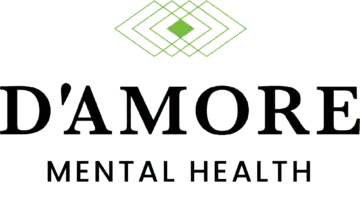You may have noticed that the topic of mental health is becoming more widely discussed. That’s because about 1 in 4 adults in America suffers from a diagnosable mental illness each year.
Getting a diagnosis for your mental illness can make all the difference.
Yet, some mental illnesses are harder to diagnose than others. One mental illness that can fall into this category is hoarding. A hoarding mental illness that manifests as compulsive hoarding can have varying degrees.
If you or your loved one has an OCD hoarding problem you have options. Here are some is everything you should know about a hoarding mental illness.
What Is OCD Hoarding or Compulsive Hoarding?
Obsessive-compulsive disorder or OCD is a mental illness that can affect any person no matter their age or ethnicity. Obsessions and compulsions occur in cycles. When you have an obsession you tend to have intrusive and unwanted thoughts.
This can be in the form of images, urges, or triggers that cause you to have intense feelings of distress. Compulsions refer to the behaviors you perform to quiet your obsessions or reduce your distress.
While many people experience obsessive thoughts, it’s not on the same level as someone with OCD. A diagnosis of obsessive-compulsive disorder is made when cycles of obsessions and compulsions are extreme. Those who suffer from OCD have thoughts and behaviors that get in the way of everyday life.
Combining obsessive-compulsive disorder with hoarding habits can result in a hoarding mental illness. For example, compulsive hoarding can start small, by simply collecting and keeping a lot of items. This then turns into keeping items that are useless or items that have no significant value.
The next phase of a hoarding disorder is when these same items begin to clutter living spaces to the point you can’t use them as intended. OCD hoarding can also make you hoard items even if they cause problems in daily activities.
Signs of a Hoarding Mental Illness
Understanding the signs of a hoarding mental illness can help you get a proper diagnosis. Here are some signs that could indicate someone is dealing with compulsive hoarding:
- Unable to get rid of items
- Losing important things in clutter such as money or keys
- Large amounts of clutter that make it hard to get around
- Feelings of distress because clutter has become overwhelming
- Unable to control the urge to take free items (straws from a restaurant, advertising mailers)
- Buying items in overwhelming quantities when they aren’t needed
- Being distant with friends and family due to embarrassment or shame because of clutter
- Not allowing for home repairs because no one can enter the home
When Does Hoarding Behavior Begin?
Hoarding behavior does not have a set age. It can begin in the early teenage years and go into the later years in life. Those who experience compulsive hoarding tend to struggle with it for years.
It is common for a hoarder to live alone as many family members find hoarding behavior to be a problem. Statistically, compulsive hoarding habits are present in about 1 in 50 people. Usually, you will see people seek treatment for hoarding in their 50s.
What Makes Getting Rid of Clutter Difficult for Hoarders?
You should know there are many things that make it difficult for people with a hoarding mental illness to get rid of clutter. It can start with difficulty to organize. As a hoarder, you can have strong beliefs in items that others see as non-useful.
A compulsive hoarder can have strong positive feelings when they get new items. This causes them to repeat this behavior to keep that feeling. On the other hand, hoarders can experience negative feelings when considering getting rid of things.
When you suffer from a hoarding mental illness you can believe that objects have feelings that can make it hard to get rid of them. You can also experience denial about your clutter being a problem.
What Are the Effects of a Hoarding Mental Illness?
OCD hoarding can have serious effects on one’s livelihood. When clutter becomes severe it can be a health and safety hazard. Depending on the degree of hoarding, the problems that could arise can range from damage to your home, fires, health problems, or even death.
Compulsive hoarding can have devasting effects such as evictions and homelessness. It can cause problems with family members and friends too.
Treatment Options for Compulsive Hoarding
There is good news, compulsive hoarding can be treated. It is important to note that the usual treatments that work for OCD do not always work on hoarding. Strategies to treat compulsive hoarding include:
- Recycling and removing clutter
- Challenging the beliefs and thoughts about why items need to be kept
- Preventing the collection or buying of new items
- Support groups and/or coaches to help reduce and remove clutter
- Creating a prevention plan to avoid relapses
In addition to those options, while medicine by itself can’t reduce hoarding behaviors, it can help reduce the symptom. It can also help to treat conditions that exaggerate hoarding behaviors such as anxiety.
How Can You Help a Compulsive Hoarder?
You can help a compulsive hoarder by being mindful and encouraging. You want to show empathy and support as often as possible.
Find new ways to be motivating, like setting small goals for getting rid of stuff. You also help with self-care routines to reduce distress. A hoarding mental illness is not easy to deal with, so remember to be patient.
You’re Not in This Alone!
You don’t have to deal with hoarding mental illness by yourself. There are many resources and treatment options that can help.
If you or a loved one suffer from compulsive hoarding contact us today to learn more about your treatment options.





































